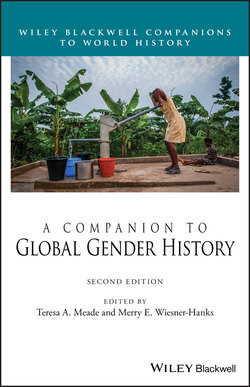Читать книгу A Companion to Global Gender History - Группа авторов - Страница 16
Chapter Two Gender and Labor in World History
ОглавлениеLaura Levine Frader1
Men’s and women’s relations in work as well as the nature of their work have varied enormously over time and geography. But perhaps the most fundamental characteristic of human labor – one that has crossed both temporal and geographical boundaries – has been the fact that it has virtually always been marked by gender, the social and historical meanings of sexual difference, and the power relations that they have produced. Men and women have engaged in different forms of work much of the time. However, these differences were not inscribed from the beginnings of human life on the planet; they emerged through historical developments and cultural change and they almost always led to gender stratification, inequality, and power differences in society overall.
This chapter reviews the historical influence of gender on labor and looks particularly at the ways that women’s and men’s work has been valued differently over time, from the earliest human societies to the age of globalization. As feminist scholars have pointed out, in industrial and post‐industrial societies, much of women’s work has not been recognized because it tended to be hidden from public view. Thus, the work that women have performed at home, providing food, carrying water, and caring for children and the elderly, has often been excluded from the economic calculus of what counts as “work,” even though it has considerable economic value. Overall, as wage labor and capitalist market relations developed historically, gender divisions became more sharply defined. Even though capitalism opened new opportunities for women, it often created new inequalities. Gender inequalities remain up to the present and show no sign of disappearing any time soon, even if they are now less acute in more parts of the globe than at any time in history.
